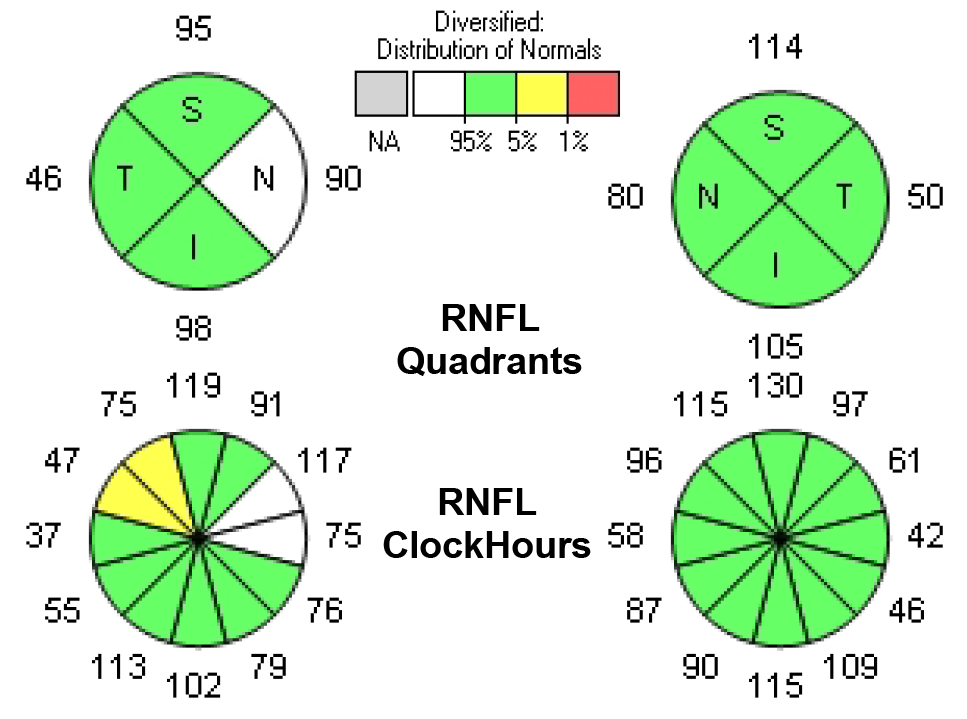 |
Normative references for OCT and OCT-A fail to reflect population-specific differences. Photo: Ryan Schott, OD. Click image to enlarge. |
Researchers recently described OCT and OCT-A retinal measures in healthy older adults to better characterize the normative distribution of retinal features and their associations with visual function. Their work was part of the Eye Determinants of Cognition (EyeDOC) study, a large community study of OCT and OCT-A findings among older Black and white individuals. Results suggest that demographic and community features should be considered alongside the normative reference measures.
The cross-sectional study took place over two years, with study participants in either Jackson, MS, or Washington County, MD. The researchers collected retinal measurements on OCT and OCT-A, including retinal nerve fiber layer (RNFL) thickness, macular ganglion cell complex (GCC) thickness, macular vessel density (VD) in the superficial capillary plexus and deep capillary plexus and foveal avascular zone (FAZ) area. Visual acuity and contrast sensitivity were also measured.
A total of 759 participants (mean age: 80, 63% female, 46% Black) took part in the study. The researchers reported regional differences in mean macular GCC thickness (89.2µm vs. 92.3µm) and mean FAZ area (0.36mm2 vs. 0.26mm2) between Jackson and Washington County participants. They also found that participants younger than 80 had a greater mean RNFL thickness and mean VD than those older than 80.
In terms of contrast sensitivity, the researchers reported that on linear regression, each 10µm increment in RNFL thickness and GCC thickness was positively associated with a 0.016-higher logCS among all participants. Jackson participants had stronger associations and also demonstrated a link between visual acuity and structural measures. Their coefficients per 10µm increment were 0.012logMAR visual acuity (RNFL) and 0.020logMAR visual acuity (macular GCC).
The researchers wrote in their paper that their results indicate that there are “age- and community-related differences in retinal feature distributions and associations of greater RNFL thickness and GCC thickness with better contrast sensitivity.” They noted that the clinical application of normative references for OCT and OCT-A measures should consider these findings.
Dong Y, Guo X, Arsiwala LT, et al. Association of optical coherence tomography and optical coherence tomography angiography retinal features with visual function in older adults. JAMA Ophthalmol. July 14, 2022. [Epub ahead of print]. |


